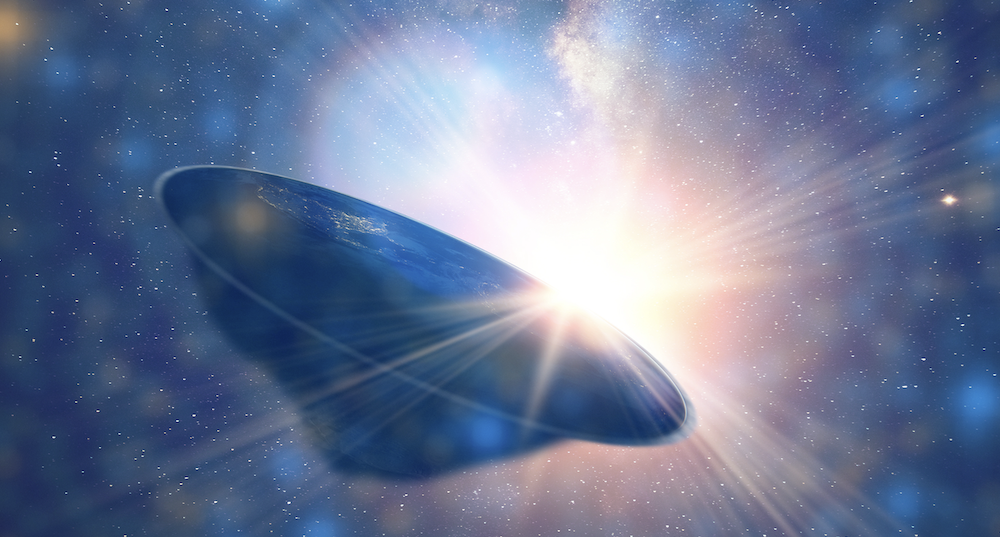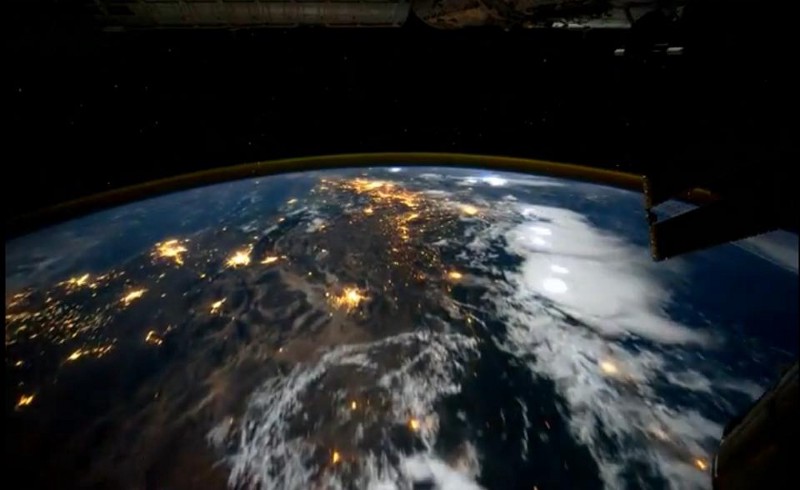Flat-Earthers: How YouTube algorithms and media mistrust revived a centuries-old conspiracy theory

- In Off the Edge: Flat Earthers, Conspiracy Culture, and Why People Will Believe Anything, journalist Kelly Weill explores the cultural and psychological factors that lead people to believe in conspiracy theories.
- This excerpt of the book covers the curious revival of the flat-Earth theory.
- At the heart of this bizarre conspiracy theory lies a concoction of mistrust of legacy media, big profits, and algorithms that tug people into echo chambers that can reinforce nearly any idea imaginable.
From OFF THE EDGE: Flat Earthers, Conspiracy Theories and Why People Will Believe Anything by Kelly Weill. Reprinted by permission of Algonquin Books of Chapel Hill. Copyright © 2022 by Kelly Weill. All rights reserved.
5 | The Rabbit Hole
THE SUN SET pink above the beaches, and the jungle birds sang into the coming dark and the Hawaiian tide rolled onto the sand like something out of a movie. In the depths of this paradise, every night, two couples sat in a hotel hot tub, fixated on a small screen that they held studiously above the frothy water.
“I didn’t care about Maui,” Ginny, a Northern California woman told me. “All I wanted to do was share with them about Flat Earth. Every evening, we watched two or three Flat Earth Clues [a Flat Earth video series], the whole time on Maui, and before they came back, they were convinced.”
Just months earlier, Ginny had been a Globe Earther. She hadn’t even believed a close friend who confided that she was second-guessing the planet’s shape. “She told me, ‘Ginny, I think the earth is flat.’ I said, ‘What? That is the most wackadoodle thing I have ever heard.’”
The friend told Ginny to search for Flat Earth videos on YouTube. And while Ginny had doubted her longtime friend, strangers on the internet soon changed her mind. She watched hours of Flat Earth videos over the course of several days and converted before the week was up.
“I spent like three nights wide awake and then I was hooked,” she said. “I told my husband, ‘You won’t believe what I’ve been watching.’” He watched the videos and became a convert, too.
Like her friend before her, Ginny couldn’t wait to share the YouTube gospel with more friends. When she and her husband took their vacation with two friends soon after, all Ginny could think about was when she would be able to show Flat Earth videos to the other couple, who were still unwinding from a previous leg of their vacation.
“We had to wait two days, because I knew they were exhausted from their trip,” she said. “I was like, ‘You guys, I’m dying, I’m dying.’” I later met both women at a Flat Earth conference. Neither was public yet about their beliefs.
Serious Flat Earthers spend money on their belief. They buy books, conference tickets, and T-shirts that earn them strange looks in the grocery store. But the real money in Flat Earth doesn’t stay in the movement—it gets siphoned off to Silicon Valley. Every time a Flat Earther watches a video in a Hawaiian hot tub or joins a Facebook group to meet other believers, they’re helping support a sprawling, multitrillion-dollar technology industry that knows conspiracy is good for business. Every minute spent on internet platforms like Facebook or YouTube is more money (often in the form of ad revenue) in those companies’ coffers. In order to squeeze the most value from each user, these tech giants developed algorithms that serve up an addictive combination of comforting and titillating content. Conspiracy theories—endlessly intriguing, and tailored to our worst suspicions—became one of the best-performing products in the attention economy. The truth became less profitable than fiction. So Facebook and YouTube, two of the internet’s largest empires, let their reality-warping algorithms run for years, flattening the world around them.
In hundreds of conversations with Flat Earthers, I’ve met only three who converted before 2014. This wasn’t because 2014 was some significant year for pro-Flat scientific discovery; no great experiments cast doubt on the globe that year. The basic principles of Flat Earth theory have remained the same since the 1800s. But the old theory got new life in 2014 because Eric Dubay and other truthers started uploading Flat Earth videos to YouTube and establishing Flat Earth Facebook pages that drew in a motley assortment of paranoiacs from across the conspiratorial internet. On those websites, finally, after 150 years of ridicule, Flat Earth found itself in an environment that embraced it—even depended on it.
Much of YouTube, the Google-owned website that has become virtually synonymous with “online video,” has been unwatchable garbage from the beginning. I know because I was one of the site’s earliest contributors of unwatchable garbage. When I was in middle school, I became one of the first YouTubers when my friend and I used an unattended basement computer to upload stop-motion videos of Beanie Babies reenacting scenes from young adult novels. Really mortifying stuff. But it was 2005, months after YouTube’s launch, and the website was a wasteland of cat videos and poorly lit webcam monologues. YouTube democratized video, letting kids broadcast themselves into a public space that was once reserved for professional news outlets. Quality was no barrier to participation. If anything, no-budget videos became YouTube’s hallmark. The site’s apparently unfiltered clips contrasted with traditional media, and gave its videos an air of gritty reality.
“YouTube positioned itself very early on as alternative media,” Kevin Roose, a New York Times technology columnist, told me. “It was not just different from TV in the sense that it was lower-budget, mostly amateur, and not as centralized. It was also seen as more real, more authentic.”
Conspiracy theorists frequently accuse the media of plotting to withhold truths and keep the public in the dark. Believers in QAnon, a far-right conspiracy theory that falsely accuses former president Donald Trump’s rivals of satanic pedophilia and cannibalism, sometimes claim that journalists rise at four in the morning to receive orders from the government. QAnon is extreme, but a broad swath of Americans echo its mistrust in the media. Sixty-one percent of respondents to a December 2018 Pew poll said the media deliberately withholds important stories.
There’s no pleasing everyone; no nightly news broadcast will perfectly mirror every viewer’s perception of the world. But this broad skepticism of journalism suggests that at one or more points—whether due to institutional biases baked into corporate media companies, lack of racial and economic diversity on newspaper mastheads, budget cuts that bleed local newsrooms dry, or something else entirely—somehow my profession has failed its audience. When most Americans watch the news, they do not see the world they believe to be true.





